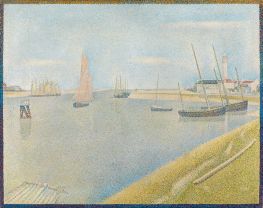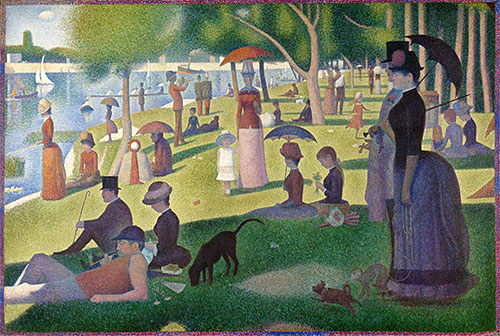A Sunday on La Grande Jatte, c.1884/86 Georges Seurat (1859-1891)
Location: Art Institute of Chicago Illinois USAOriginal Size: 207.5 x 308 cm
Own a museum-quality reproduction of A Sunday on La Grande Jatte by Georges Seurat (c.1884/86), exclusively hand-painted in oils on linen canvas by European artists with academic training. Each masterpiece is created with meticulous craftsmanship, capturing the exceptional quality and authentic brushwork of the original painting.
Giclée Canvas Print
If you want a painting which is not in our catalogue
Description
(Satin Gloss)
Borders for Stretching
400 g/m² Canvas
100+ Year Colour Guarantee
ships within 2-4 days
Creation Process
Your A Sunday on La Grande Jatte Canvas Print is individually hand-made, using sophisticated digital technology. The process of Giclée print technology imparts to the Art Print a vivid clear color, an incredible level of detail, and the authentic charm as from a museum original. We add plexiglass only on the ordered framed art prints on paper. Framed artworks on canvas are exhibited without plexiglass or glass.
If you have chosen a Canvas Print of Georges Seurat without a frame, it would be ready to be sent to you within 48 hours. However, if you have chosen an art print stretched on a frame, then the process of printing and framing will take about 7-8 days.
Sizes
Our art prints are offered in sizes that are exactly in proportion to the original paintings in the museum. You may enlarge or reduce the size of the painting by using the upper and lower purple arrows.
We add additional 1.2" (3cm) of blank canvas above the offered dimensions which will be used to stretch the canvas on a stretcher-bar.
Delivery
The unframed print of A Sunday on La Grande Jatte will be shipped rolled up in a postal tube. The framed Canvas Print will travel packaged in a cardboard box with additional corner protectors.
Due to postal restrictions, we frame prints to a maximum length of 28" (71 cm). If you want your print to be printed out to a bigger size, then you will get it rolled up, and in order to frame it, you will have to use the services of your local framing studio. After adding the print to the shopping cart, in its screen, you can check the price of the shipping Estimate Shipping and Tax
Additional Information

Le Chahut c.1889/90
$69.59
Georges Seurat
Original Size:170 x 141 cm
Kroller-Mueller Museum, Otterlo, Netherlands

The Canal of Gravelines, in the Direction of the Sea 1890
$67.27
Georges Seurat
Original Size:73.5 x 92.3 cm
Kroller-Mueller Museum, Otterlo, Netherlands

